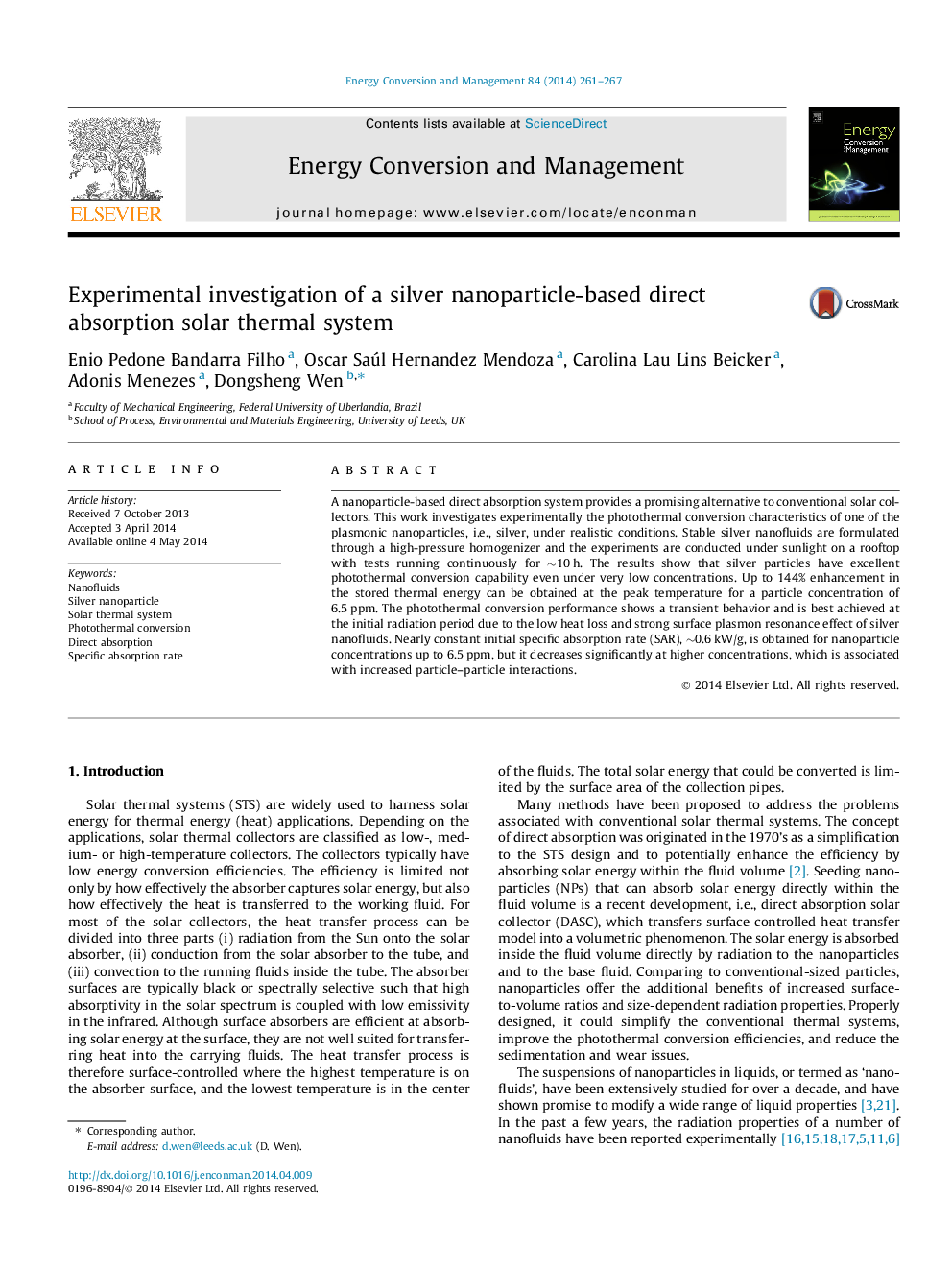| کد مقاله | کد نشریه | سال انتشار | مقاله انگلیسی | نسخه تمام متن |
|---|---|---|---|---|
| 763793 | 1462878 | 2014 | 7 صفحه PDF | دانلود رایگان |
• Pilot study of photothermal conversion of Ag nanoparticle under realistic conditions.
• Tests were performed under direct sunlight continuously for ∼10 h.
• Silver nanoparticle improves remarkably the photothermal conversion efficiency.
• Bulk temperature rise of Ag nanofluids can be 10 times higher than the base fluid.
• The specific absorption rate of silver reaches ∼0.6 kW/g initially.
A nanoparticle-based direct absorption system provides a promising alternative to conventional solar collectors. This work investigates experimentally the photothermal conversion characteristics of one of the plasmonic nanoparticles, i.e., silver, under realistic conditions. Stable silver nanofluids are formulated through a high-pressure homogenizer and the experiments are conducted under sunlight on a rooftop with tests running continuously for ∼10 h. The results show that silver particles have excellent photothermal conversion capability even under very low concentrations. Up to 144% enhancement in the stored thermal energy can be obtained at the peak temperature for a particle concentration of 6.5 ppm. The photothermal conversion performance shows a transient behavior and is best achieved at the initial radiation period due to the low heat loss and strong surface plasmon resonance effect of silver nanofluids. Nearly constant initial specific absorption rate (SAR), ∼0.6 kW/g, is obtained for nanoparticle concentrations up to 6.5 ppm, but it decreases significantly at higher concentrations, which is associated with increased particle–particle interactions.
Journal: Energy Conversion and Management - Volume 84, August 2014, Pages 261–267
